With the huge Agritechnica Show scheduled for early November, farm machinery companies will be using the occasion to launch significant technology changes for the future.
While there have been hints at an electric power future for agricultural tractors and machines, the reality of that happening still seems some distance away.
There will be some significant new electric power options on show at Agritechnica, but is a replacement for the diesel engine as a power source in agriculture still some years away?
Most farmers and contractors who purchase tractors and machinery do so with funding based on seven- or eight-year bank loans or leases.
That timescale for 2024 machinery purchases brings us into 2031 at a minimum, in terms of machine replacement.
This year, the EU allowed a legal exemption for cars and vans running on e-fuels to remain on sale after the initial 2035 deadline date.
Most car manufacturers are betting on the battery electric drive systems for the future, but for off-road machines such as tractors and harvesters, the power requirements are different.
So, the questions are, what engine technology will be legally allowed to be sold under EU engine emissions rules after that point and how will these rules impact on the trade-in values of machines by then? Are we going to get to the stage where, by 2030, older tractors and combine harvesters will not be allowed to be used due to emissions restrictions?
Tractors and farm machines have always had a long lifecycle of use. Well over five million good, used classic tractors powered by diesel engines are still working effectively on thousands of farms across Europe 40 years after they were first manufactured.
It is estimated that there are 700,000 combine harvesters working on European farms. It is fair to also estimate that half of these combine harvesters are more than 20 years old based on the new replacement market of about 7,000 units.
The numbers of self-propelled silage harvesters are less, while still significant at over 100,000 machines, while the age structure is possibly lower.
Replacing older tractors and machines with electric-powered options by dumping their engines for electric power units is no longer considered practical or even environmentally desirable. What do we do with the millions of discarded diesel engines?
Construction
The construction sector is different to agriculture. Smaller construction machines are being electrified in significant numbers, such as mini diggers and loaders, but at a cost.
Construction machines used in static type city locations have electrification possibilities reducing CO2 emissions and also lowering noise pollution.
Even here, moving to electric power for machines will add to further machinery cost inflation, which may be tolerable in the construction world but is not in farming because of lower margins of profitability.
So, what are the options? JCB is moving forward with the hydrogen-powered engine option with some significant success.
Hydrogen has its challenges, mainly in the form of production cost and fuel storage.
Diesel engines can be retrofitted with hydrogen systems that allow existing diesel vehicles to be converted to run mainly on H2. This allows the continued use of existing machines while drastically reducing their emissions.
Research work in Australia has confirmed that diesel trucks can be converted to run on a hydrogen and diesel mix, using about 10% diesel.
This reduces the emissions from the diesel truck by around 90%, which is significant.
On a visit to Claas in October 2022 with the European Organisation of Agricultural, Rural and Forestry Contractors, CEETTAR, there was a healthy exchange of ideas on this subject of fuel and engines for the future.
Priorities
It was remarked that, politically across Europe, the priorities were on ways of reducing emissions from the transport (cars and trucks). It appears that there is less interest in lower CO2 emission power sources for off-road machinery, which includes tractors and farm machines and construction machinery.
Because of this, there has been a deficiency in current thinking around the issue of fuel sources for off-road machinery, which includes agricultural tractors and machinery.
In Germany, the Government-funded KTBL organisation held a two-day expert meeting in 2022 with contractors in attendance, to discuss the alternative fuel options for future agriculture. The overall view was that while methane as fuel is considered very clean, it will not be suitable for all areas of Europe.
Politicians may be visionary but because they are not technical in their approach, they often don’t see the whole picture
Other electric tractor drive systems, while available in trial form at higher power levels, are not always in field operating conditions.
European politicians aim to have lower CO2 emissions solutions for everybody, but, in reality, they do not have solutions that work for farming.
Politicians may be visionary but because they are not technical in their approach, they often don’t see the whole picture.
There is a general view within the agricultural tractor and machinery industry, which includes manufacturers and machinery users, such as European contractor groups, that the sector just needs more time.
There is a feeling within the off-road sector that there are no five-year to 15-year alternative power solutions yet available.
There may be longer-term solutions but 2030 is coming very soon as it is now within the operating lifetime of machines that will be purchased in 2024.
It is for this reason that the concept of drop-in fuels is now being more widely discussed. One of the drop-in fuels being seriously considered is a product called hydrotreated vegetable oil (HVO).
Fossil fuel replacement
These are fuels that can replace fossil fuel diesel with lower emissions and without the need for extensive and costly engine replacement or modifications.
These are new fuels that agricultural tractor and machinery operators can quickly get used to and can be incorporated into their systems with relative ease.
They will be part of a power transition in agriculture. The challenge will be to deliver volume with supply chain traceability and at an affordable price.
HVO may have its detractors but the option of dumping millions of engines in agricultural tractors and machines is neither practical, affordable, nor environmentally desirable.
What is hydrotreated vegetable oil (HVO)?
HVO is a diesel-like fuel that can be produced without fossil resources by processing vegetable oil with hydrogen. It gives a 90% reduction in carbon emissions relative to diesel.
HVO has a shelf life of 10 years, reduces particulates by up to 85% and nitrogen oxides by up to 30%.
HVO fuel has similar chemical and physical properties to diesel fuel. Its fossil-free composition and low carbon content make it a sustainable fuel option and differentiate it from conventional diesel.

HVO can be used in older tractor and farm machine engines without modifications. This fuel can be easily and safely transported using existing systems with 90% reduction in CO2 emissions and only a marginal additional fuel cost penalty.
HVO also has approximately 7% less fuel density, limited aromatic and sulphur content, and a higher cetane value versus diesel fuel.
Despite these differences, HVO can be blended with diesel in any proportion. This ease of integration is particularly beneficial in agricultural applications.
While HVO is derived from the same feedstocks used to produce biodiesel, it is produced via a hydrotreated process rather than a process called transesterification, which is used for the production of biodiesel.
This means that HVO is not prone to bacterial growth in comparison with biodiesel, making HVO a sustainable option for machines that are seasonal in use.
Engine makers such as Cummins Engines report that no changes or modifications to hardware or software are needed to run their approved engines on HVO fuels.
Many other engine manufacturers are now approving their engines for use with HVO.
HVO is more expensive than conventional diesel fuel and has slightly lower energy value. Despite this, it is still a more cost-effective and flexible option than full engine replacement with electric power units.
Given that the Irish agricultural and forestry contractor sector alone uses in the region of 350m litres of diesel annually.
Converting the entire fleet to HVO has the potential to reduce emissions by 90% or almost 800,000 tonnes of CO2 annually. But at a cost.
Expensive
HVO is about 20c/litre more expensive than agri-diesel and incurs a carbon tax, when effectively its carbon output is minimal.
The elimination of the carbon tax on a green market gas oil version of HVO would make its uptake more attractive and financially more acceptable and a more practical approach to dealing with the CO2 emissions issue from the off-road machinery sector, which includes tractors and farm machinery.
Is HVO available
in Ireland?
This is a relatively new fuel source, the rate of adoption of HVO in Ireland today is mainly limited to the truck sector. Over time, any issues of volume supply will ease out while the cost will remain higher, so adoption will be slower.
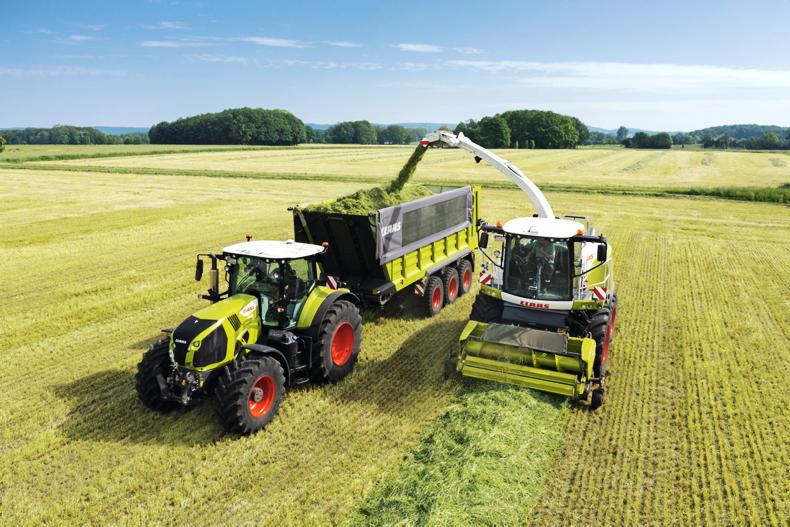
HVO or hydrotreated vegetable oil offers a medium transition opportunity for tractors and agricultural machinery, as viable electric power options are not practical in agricultural applications.
Supply chains are developing to serve the Irish market. Certa, Circle K and Tria are among the oil distributors that are supplying HVO in Ireland. The UK-based company Green Biofuels has established a new 54m litre capacity storage facility in Ringaskiddy, Co Cork, specifically for the import of the product, the majority of which is produced by Neste in Finland and Holland.
In the 1990s, Neste’s research department developed the NEXBTL refining technology. With this technology, Neste produces renewable products from 100% renewable raw materials.
During the NEXBTL production, hydrogen is used in the chemical process to remove oxygen from the fatty acids that make up the fuel’s completely renewable raw material base.
The outcome is a renewable diesel, which has a similar chemical composition to fossil diesel.
This diesel complies with the EN15940 specification for paraffinic diesel fuel.
Neste MY Renewable Diesel (HVO100) can easily be used as such without any need for engines to be modified. It can also be blended with other diesel fuels.
Government policy on HVO and fraud issues
Minister for Transport, Eamon Ryan said in June, in a written answer to a question related to HVO, that the supply of HVO, among other renewable fuels, will be critical in ensuring the 2030 Climate Action Plan target is met.
“A Biofuels Study Report conducted on behalf of the Department in 2022 estimated that between 570m and 730m litres of biodiesel/HVO could be required to meet the Climate Action Plan transport targets by 2030,” he added.
With regard to challenges associated with the policy of incentivising increased biofuel supply, in particular concerning future availability and meeting EU sustainability requirements, the minister said that the Department of Transport will establish working groups this year involving stakeholder representatives, to work through these challenges.
The EU has introduced more rigorous verification requirements including an EU database for all biofuel supply
He added that used cooking oil (UCO), the main feedstock for HVO, is a limited resource and additional demand for it across many sectors will impact on its cost and may heighten the risk of fuel fraud in global supply chains.
To combat risks such as this, the EU has introduced more rigorous verification requirements including an EU database for all biofuel supply.
He said that the Department of Transport engages with the European Commission on an ongoing basis, including through the working group on sustainability, set up under the European Renewable Energy Directive.
In the longer term, the Irish Government aims to use offshore wind power to generate hydrogen as a power source, which could be part of a sustainable industry with Irish-produced vegetable oils.
There are some arguments against the use of HVO, including the view that vegetable oils used in its production are not produced sustainably. The supply of used cooking oil, which has been an ingredient in the production of HVO, has been shown to area has been open to fraud.
Producing biofuels from crops has also been questioned as it competes with food production in many poorer economies of the world.
It is a market that has been exposed to fraud possibilities in the supply chain.
One solution being proposed is that the EU would limit biofuels and their feedstock to products sourced within the EU in an effort to ensure traceability.
That would also support a home-grown vegetable oil sector as part of a circular farm economy, as well as allowing continuity of millions of existing machine systems across Europe.
With the huge Agritechnica Show scheduled for early November, farm machinery companies will be using the occasion to launch significant technology changes for the future.
While there have been hints at an electric power future for agricultural tractors and machines, the reality of that happening still seems some distance away.
There will be some significant new electric power options on show at Agritechnica, but is a replacement for the diesel engine as a power source in agriculture still some years away?
Most farmers and contractors who purchase tractors and machinery do so with funding based on seven- or eight-year bank loans or leases.
That timescale for 2024 machinery purchases brings us into 2031 at a minimum, in terms of machine replacement.
This year, the EU allowed a legal exemption for cars and vans running on e-fuels to remain on sale after the initial 2035 deadline date.
Most car manufacturers are betting on the battery electric drive systems for the future, but for off-road machines such as tractors and harvesters, the power requirements are different.
So, the questions are, what engine technology will be legally allowed to be sold under EU engine emissions rules after that point and how will these rules impact on the trade-in values of machines by then? Are we going to get to the stage where, by 2030, older tractors and combine harvesters will not be allowed to be used due to emissions restrictions?
Tractors and farm machines have always had a long lifecycle of use. Well over five million good, used classic tractors powered by diesel engines are still working effectively on thousands of farms across Europe 40 years after they were first manufactured.
It is estimated that there are 700,000 combine harvesters working on European farms. It is fair to also estimate that half of these combine harvesters are more than 20 years old based on the new replacement market of about 7,000 units.
The numbers of self-propelled silage harvesters are less, while still significant at over 100,000 machines, while the age structure is possibly lower.
Replacing older tractors and machines with electric-powered options by dumping their engines for electric power units is no longer considered practical or even environmentally desirable. What do we do with the millions of discarded diesel engines?
Construction
The construction sector is different to agriculture. Smaller construction machines are being electrified in significant numbers, such as mini diggers and loaders, but at a cost.
Construction machines used in static type city locations have electrification possibilities reducing CO2 emissions and also lowering noise pollution.
Even here, moving to electric power for machines will add to further machinery cost inflation, which may be tolerable in the construction world but is not in farming because of lower margins of profitability.
So, what are the options? JCB is moving forward with the hydrogen-powered engine option with some significant success.
Hydrogen has its challenges, mainly in the form of production cost and fuel storage.
Diesel engines can be retrofitted with hydrogen systems that allow existing diesel vehicles to be converted to run mainly on H2. This allows the continued use of existing machines while drastically reducing their emissions.
Research work in Australia has confirmed that diesel trucks can be converted to run on a hydrogen and diesel mix, using about 10% diesel.
This reduces the emissions from the diesel truck by around 90%, which is significant.
On a visit to Claas in October 2022 with the European Organisation of Agricultural, Rural and Forestry Contractors, CEETTAR, there was a healthy exchange of ideas on this subject of fuel and engines for the future.
Priorities
It was remarked that, politically across Europe, the priorities were on ways of reducing emissions from the transport (cars and trucks). It appears that there is less interest in lower CO2 emission power sources for off-road machinery, which includes tractors and farm machines and construction machinery.
Because of this, there has been a deficiency in current thinking around the issue of fuel sources for off-road machinery, which includes agricultural tractors and machinery.
In Germany, the Government-funded KTBL organisation held a two-day expert meeting in 2022 with contractors in attendance, to discuss the alternative fuel options for future agriculture. The overall view was that while methane as fuel is considered very clean, it will not be suitable for all areas of Europe.
Politicians may be visionary but because they are not technical in their approach, they often don’t see the whole picture
Other electric tractor drive systems, while available in trial form at higher power levels, are not always in field operating conditions.
European politicians aim to have lower CO2 emissions solutions for everybody, but, in reality, they do not have solutions that work for farming.
Politicians may be visionary but because they are not technical in their approach, they often don’t see the whole picture.
There is a general view within the agricultural tractor and machinery industry, which includes manufacturers and machinery users, such as European contractor groups, that the sector just needs more time.
There is a feeling within the off-road sector that there are no five-year to 15-year alternative power solutions yet available.
There may be longer-term solutions but 2030 is coming very soon as it is now within the operating lifetime of machines that will be purchased in 2024.
It is for this reason that the concept of drop-in fuels is now being more widely discussed. One of the drop-in fuels being seriously considered is a product called hydrotreated vegetable oil (HVO).
Fossil fuel replacement
These are fuels that can replace fossil fuel diesel with lower emissions and without the need for extensive and costly engine replacement or modifications.
These are new fuels that agricultural tractor and machinery operators can quickly get used to and can be incorporated into their systems with relative ease.
They will be part of a power transition in agriculture. The challenge will be to deliver volume with supply chain traceability and at an affordable price.
HVO may have its detractors but the option of dumping millions of engines in agricultural tractors and machines is neither practical, affordable, nor environmentally desirable.
What is hydrotreated vegetable oil (HVO)?
HVO is a diesel-like fuel that can be produced without fossil resources by processing vegetable oil with hydrogen. It gives a 90% reduction in carbon emissions relative to diesel.
HVO has a shelf life of 10 years, reduces particulates by up to 85% and nitrogen oxides by up to 30%.
HVO fuel has similar chemical and physical properties to diesel fuel. Its fossil-free composition and low carbon content make it a sustainable fuel option and differentiate it from conventional diesel.

HVO can be used in older tractor and farm machine engines without modifications. This fuel can be easily and safely transported using existing systems with 90% reduction in CO2 emissions and only a marginal additional fuel cost penalty.
HVO also has approximately 7% less fuel density, limited aromatic and sulphur content, and a higher cetane value versus diesel fuel.
Despite these differences, HVO can be blended with diesel in any proportion. This ease of integration is particularly beneficial in agricultural applications.
While HVO is derived from the same feedstocks used to produce biodiesel, it is produced via a hydrotreated process rather than a process called transesterification, which is used for the production of biodiesel.
This means that HVO is not prone to bacterial growth in comparison with biodiesel, making HVO a sustainable option for machines that are seasonal in use.
Engine makers such as Cummins Engines report that no changes or modifications to hardware or software are needed to run their approved engines on HVO fuels.
Many other engine manufacturers are now approving their engines for use with HVO.
HVO is more expensive than conventional diesel fuel and has slightly lower energy value. Despite this, it is still a more cost-effective and flexible option than full engine replacement with electric power units.
Given that the Irish agricultural and forestry contractor sector alone uses in the region of 350m litres of diesel annually.
Converting the entire fleet to HVO has the potential to reduce emissions by 90% or almost 800,000 tonnes of CO2 annually. But at a cost.
Expensive
HVO is about 20c/litre more expensive than agri-diesel and incurs a carbon tax, when effectively its carbon output is minimal.
The elimination of the carbon tax on a green market gas oil version of HVO would make its uptake more attractive and financially more acceptable and a more practical approach to dealing with the CO2 emissions issue from the off-road machinery sector, which includes tractors and farm machinery.
Is HVO available
in Ireland?
This is a relatively new fuel source, the rate of adoption of HVO in Ireland today is mainly limited to the truck sector. Over time, any issues of volume supply will ease out while the cost will remain higher, so adoption will be slower.

HVO or hydrotreated vegetable oil offers a medium transition opportunity for tractors and agricultural machinery, as viable electric power options are not practical in agricultural applications.
Supply chains are developing to serve the Irish market. Certa, Circle K and Tria are among the oil distributors that are supplying HVO in Ireland. The UK-based company Green Biofuels has established a new 54m litre capacity storage facility in Ringaskiddy, Co Cork, specifically for the import of the product, the majority of which is produced by Neste in Finland and Holland.
In the 1990s, Neste’s research department developed the NEXBTL refining technology. With this technology, Neste produces renewable products from 100% renewable raw materials.
During the NEXBTL production, hydrogen is used in the chemical process to remove oxygen from the fatty acids that make up the fuel’s completely renewable raw material base.
The outcome is a renewable diesel, which has a similar chemical composition to fossil diesel.
This diesel complies with the EN15940 specification for paraffinic diesel fuel.
Neste MY Renewable Diesel (HVO100) can easily be used as such without any need for engines to be modified. It can also be blended with other diesel fuels.
Government policy on HVO and fraud issues
Minister for Transport, Eamon Ryan said in June, in a written answer to a question related to HVO, that the supply of HVO, among other renewable fuels, will be critical in ensuring the 2030 Climate Action Plan target is met.
“A Biofuels Study Report conducted on behalf of the Department in 2022 estimated that between 570m and 730m litres of biodiesel/HVO could be required to meet the Climate Action Plan transport targets by 2030,” he added.
With regard to challenges associated with the policy of incentivising increased biofuel supply, in particular concerning future availability and meeting EU sustainability requirements, the minister said that the Department of Transport will establish working groups this year involving stakeholder representatives, to work through these challenges.
The EU has introduced more rigorous verification requirements including an EU database for all biofuel supply
He added that used cooking oil (UCO), the main feedstock for HVO, is a limited resource and additional demand for it across many sectors will impact on its cost and may heighten the risk of fuel fraud in global supply chains.
To combat risks such as this, the EU has introduced more rigorous verification requirements including an EU database for all biofuel supply.
He said that the Department of Transport engages with the European Commission on an ongoing basis, including through the working group on sustainability, set up under the European Renewable Energy Directive.
In the longer term, the Irish Government aims to use offshore wind power to generate hydrogen as a power source, which could be part of a sustainable industry with Irish-produced vegetable oils.
There are some arguments against the use of HVO, including the view that vegetable oils used in its production are not produced sustainably. The supply of used cooking oil, which has been an ingredient in the production of HVO, has been shown to area has been open to fraud.
Producing biofuels from crops has also been questioned as it competes with food production in many poorer economies of the world.
It is a market that has been exposed to fraud possibilities in the supply chain.
One solution being proposed is that the EU would limit biofuels and their feedstock to products sourced within the EU in an effort to ensure traceability.
That would also support a home-grown vegetable oil sector as part of a circular farm economy, as well as allowing continuity of millions of existing machine systems across Europe.







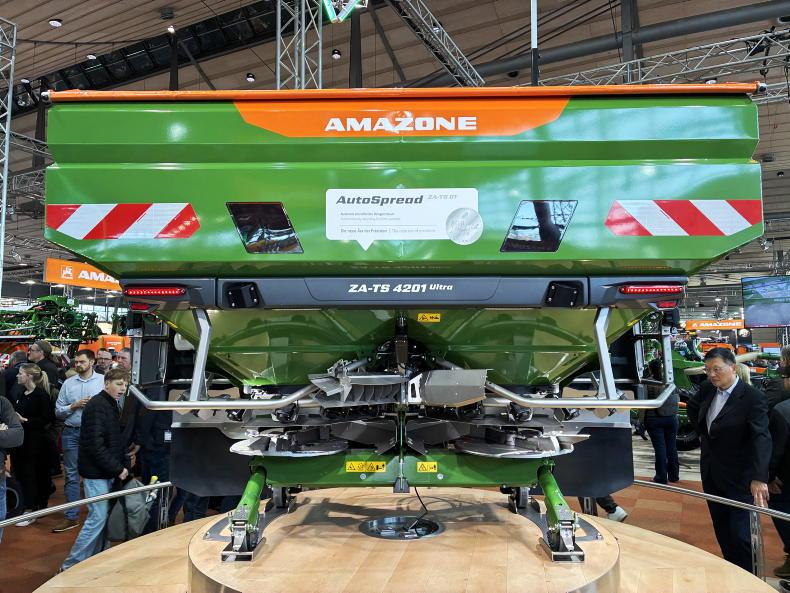

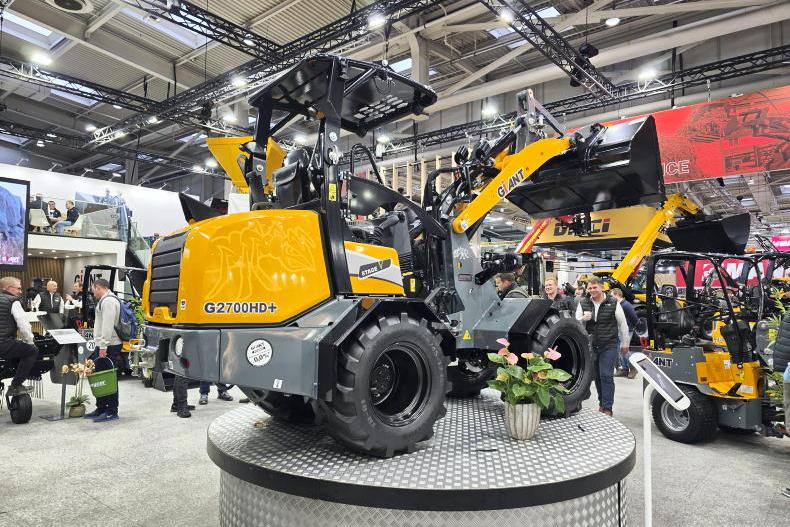
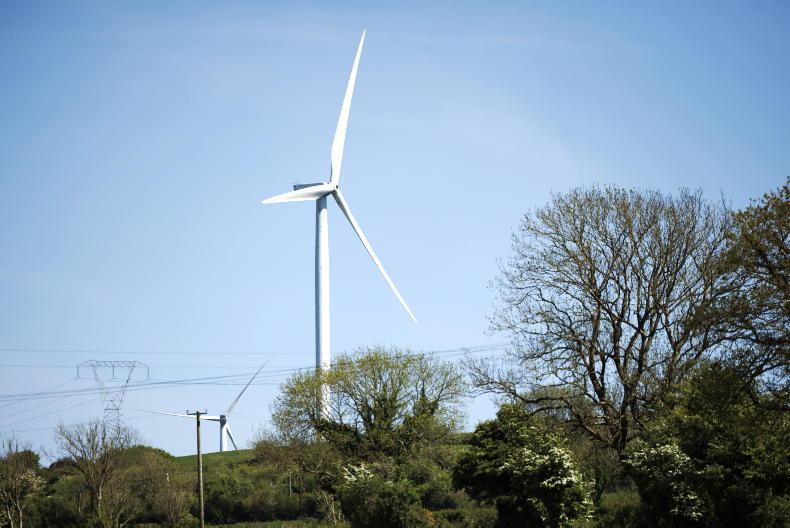
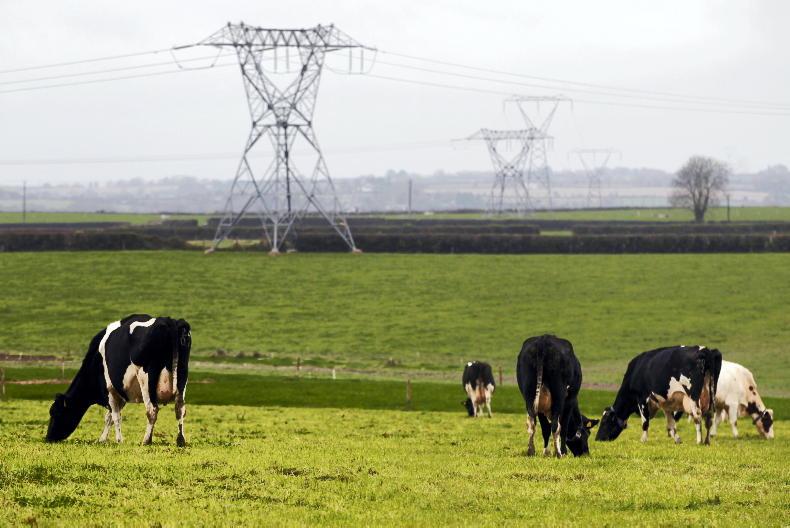
SHARING OPTIONS